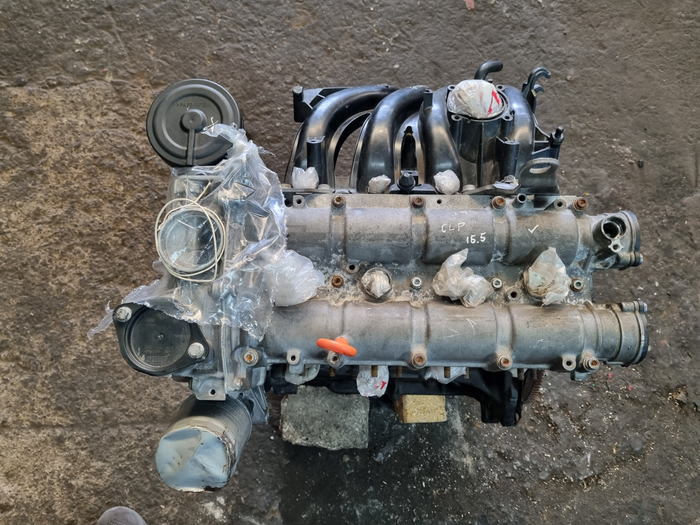Replace a state-of-the-art clp engine for better performance.
Replace a state-of-the-art clp engine for better performance.
Blog Article
Just How a Clp Engine Can Enhance Performance in Different Industries
The development of CLP engines notes a significant shift in operational effectiveness throughout numerous fields, driven by their ability to maximize fuel consumption and reduce downtime. As organizations significantly focus on sustainability along with performance, the duty of CLP engines becomes even a lot more critical.
Introduction of CLP Engines
CLP engines, or Constant Liquid Propellant engines, stand for a considerable development in propulsion innovation, especially for area applications. These engines utilize a continual feed system that permits for the sustained expulsion of propellant, leading to boosted effectiveness and performance contrasted to traditional strong or hybrid propulsion systems. By preserving a constant circulation of liquid propellant, CLP engines can achieve a lot more accurate drive control, which is critical for navigating spacecraft in numerous goal situations.
The design of CLP engines incorporates innovative products and ingenious gas management systems. clp engine. This causes decreased weight and enhanced integrity, vital factors for long-duration area missions. The continual operation decreases the danger of burning instability, a common difficulty in standard rocket engines.

Benefits in Manufacturing
The manufacturing of Continuous Fluid Propellant (CLP) engines provides a number of significant advantages that enhance both efficiency and cost-effectiveness. Among the key benefits is the streamlined manufacturing procedure, which reduces the complexity connected with traditional propulsion systems. By making use of fluid propellant, producers can achieve better accuracy in engine performance, leading to maximized energy output and decreased waste.
Additionally, CLP engines promote a higher level of modularity, permitting simpler integration right into numerous manufacturing lines. This flexibility can considerably reduce lead times and boost total functional flexibility. The usage of CLP modern technology additionally has a tendency to decrease the requirement for substantial maintenance due to less moving components, which equates right into lowered downtime and functional expenses.

Applications in Logistics
Leveraging Constant Liquid Propellant (CLP) engines in logistics supplies significant benefits in functional efficiency and dependability. These engines offer a durable service for different transport demands, making it possible for the seamless activity of items throughout substantial distances. The inherent layout of CLP engines allows for consistent power outcome, which equates right into smoother and much more foreseeable transportation schedules.
Among the essential applications of CLP engines in logistics remains in sturdy products transport, where they can drive both ground and aerial vehicles. Their capacity to preserve high performance under varying lots conditions guarantees that shipment timelines are met, therefore boosting client complete satisfaction. Additionally, CLP engines can be incorporated into automated logistics systems, helping with real-time monitoring and enhancing path planning.
In addition, the durability of CLP engines lowers maintenance downtime, permitting logistics business to maximize their functional capabilities. This is specifically useful in warehousing operations, where performance in dealing with and transporting products is crucial. As logistics remains to develop, the assimilation of CLP engines represents a forward-thinking strategy that not only read this post here boosts performance however you can try these out also sustains the sector's growing needs for reliability and speed.
Influence On Energy Performance
How do Continuous Fluid Propellant (CLP) engines enhance power performance in transportation? CLP engines use a regular flow of fluid gas, optimizing combustion procedures and maintaining a steady drive result. This design lessens power losses related to conventional burning engines, where gas delivery can differ and result in inadequacies.
The continual operation of CLP engines permits a much more reliable thermal cycle, causing higher specific impulse compared to traditional engines. clp engine. This equates to minimized gas consumption for the exact same amount of job done, significantly lowering operational expenses across various transportation industries, including air travel and maritime industries
In addition, the capacity of CLP engines to keep ideal efficiency under varying load problems reduces the need for regular acceleration and slowdown, further enhancing gas performance. Improved energy efficiency not just adds to cost financial savings yet also results in lower greenhouse gas emissions, aligning with global sustainability goals.
Future Trends and Innovations
Arising improvements in Constant Liquid Propellant (CLP) engine technology promise to change the landscape of transport effectiveness and sustainability. As markets pivot toward greener choices, CLP engines stand at the forefront, incorporating ingenious products and style approaches that boost efficiency while lessening environmental influence.
Among the most encouraging trends is the adoption of hybrid systems that integrate CLP engines with renewable check this site out resource sources. This synergy can enhance fuel consumption and reduce exhausts, aligning with international sustainability objectives. Developments in computational liquid dynamics (CFD) are promoting the design of even more aerodynamically efficient engines, leading to lowered drag and enhanced gas efficiency.
In addition, the development of clever monitoring systems is readied to boost operational performances. These systems leverage data analytics and IoT innovation to maximize engine performance in real-time, making sure that the engines run within their most efficient specifications.
As study continues to check out different propellant formulations-- such as biofuels and synthetic gas-- the future of CLP engines looks appealing. By using these innovations, markets can not just boost their efficiency however additionally add significantly to a cleaner, a lot more lasting future in transport.
Final Thought
In final thought, CLP engines represent a considerable development in efficiency across multiple sectors. The assimilation of sophisticated materials and fewer moving components lessens maintenance requirements, while placement with sustainability objectives settings CLP engines as a critical technology for the future.
Report this page